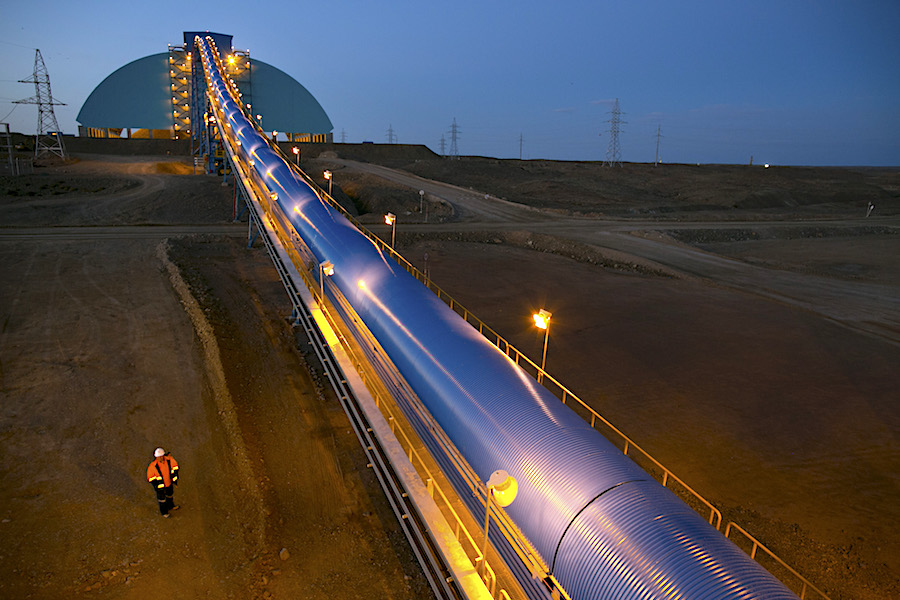
Spot gold closed at $1,729.67 an ounce on June 12, up 14% since the end of last year. Meanwhile benchmark 62% iron ore for delivery to China MT-IO-QIN62=ARG, as assessed by commodity price reporting agency Argus, was at $104.45 a tonne, a gain of 14.6%.
If the year-to-date performances are very similar, the underlying drivers of iron ore and gold are quite different.
The steel-making ingredient is benefiting from China's economic stimulus push as it recovers from the novel coronavirus, coupled with number two exporter Brazil's struggles with the same disease.
While there is also a coronavirus element to gold's rise, what investors are buying into is the belief that the weak global economy and expected extended recovery period mean low interest rates and heightened volatility of other asset classes.
Given that iron ore has rallied to a 10-month high and has both bullish stories for both demand and supply, it's perhaps surprising that the top miners are generally not sharing the good news.
Shares in Rio Tinto, which derives the bulk of its profits from its iron ore mines in the state of Western Australia, are down 3.7% so far this year in Australian dollars and 4.8% in U.S. dollar terms.
Stock in BHP Group, Australia's second-biggest iron ore producer behind Rio, is down 9.6% in U.S. dollars, with some its underperformance versus Rio likely being explained by the company's greater exposure to crude oil and natural gas.
But both Rio and BHP will be huge cash generators with iron ore at its current price, given their cost to produce a tonne of iron ore is around $14-$15.
Australia’s third-ranked iron ore miner, Fortescue Metals Group, is easily outperforming Rio and BHP, its shares gaining 33% year-to-date in U.S. dollar terms. That's a reflection of the fact that it is a pure iron ore play and also tends to pay out a higher proportion of earnings as dividends to shareholders.
Brazil's Vale is the laggard, its stock sliding 20% in U.S. dollar terms so far this year. Unlike its Australian competitors, Vale is struggling with mine closures and a potentially worsening situation as Brazil's cases of coronavirus continue to rise.
Gold miners outperform
While the high iron ore price isn't reflected in the share price of the miners, Fortescue excepted, gold miners have been performing quite well for the main part.
Canada's Barrick Gold has seen its stock price jump 29.8% in U.S. dollars so far this year, while Newmont has gained 27.6%.
Outside North America, AngloGold Ashanti is up 35.1% while fellow South African producer Gold Fields has gained 13.4%, both in U.S. dollar terms.
But top Australian producer Newcrest is down 4.1% in U.S. dollar terms year-to-date: the company had concerns, now resolved, over water supply at its Cadia mine in New South Wales state.
Overall there does appear to be a clear trend, with gold producers generally outperforming while iron ore miners haven't gained as much as the commodity they produce, Fortescue being the outlier.
While there are many elements that go into assessing the value of a company – such as dividend policy, debt levels and regulatory risks – it does appear that iron ore's story isn't as compelling as the narrative for gold.
There may also be regional and investor bias at play, with the major gold companies more exposed to retail investors in the United States, while the iron ore miners are more heavily held by institutional investors.
 Welcome to MiningComm Platform
Welcome to MiningComm Platform

 MONTT GROUP
MONTT GROUP EMAIL:service@miningcomm.com
EMAIL:service@miningcomm.com TEL:0512-67629552
TEL:0512-67629552 ADDRESS:6/F, Block A, Suxin Mansion, No.88, Zhongxin Ave West, Suzhou Industrial Park, Jiangsu Province
ADDRESS:6/F, Block A, Suxin Mansion, No.88, Zhongxin Ave West, Suzhou Industrial Park, Jiangsu Province